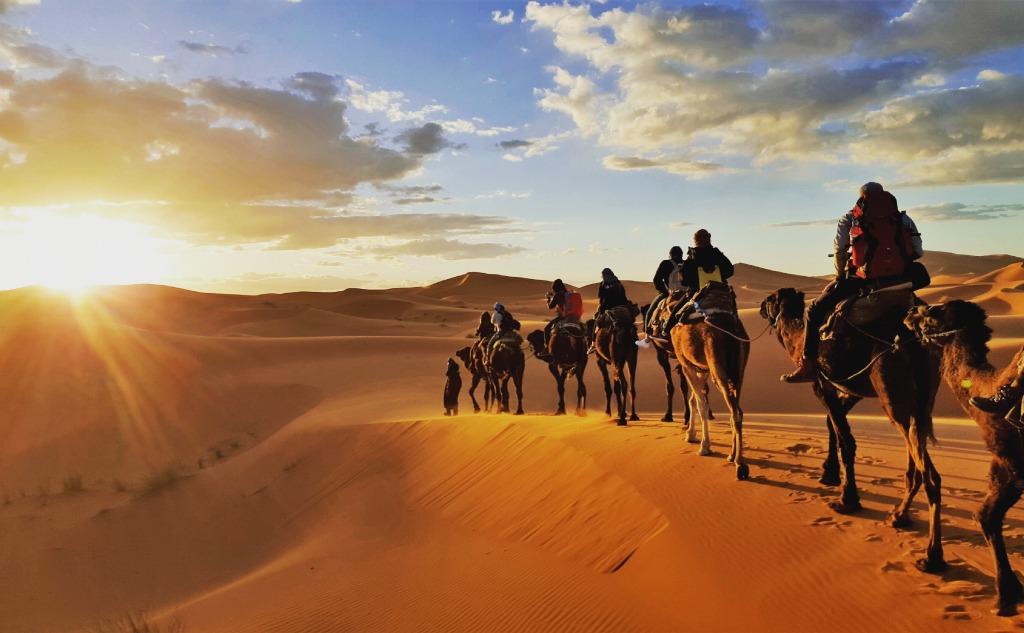Here are the differences between horses and camels and their different uses:
Their primary differences are:
- Speed
- Digestion
- Tolerance to the harsh desert climate
- Spitting
- Eyelashes and the third eyelid
- Sleeping habit
- Life span
- Structure of the foot
- Number and structure of mammary glands and teats
- The direction of penis and urination
Their uses differ primarily in:
- Riding, racing, and shows
- Transportation
- Meat
- Milk
- Beauty products and soaps
- Hair
- Leather
If you want to learn all about the differences between horses and camels and how their uses differ, then you’re in the right place.
Let’s get started!
Differences Between Horses and Camels and Their Different Uses?
I can make a General in 5 minutes, but a good horse is hard to replace.
Abraham Lincoln
This quote from Lincoln testifies to the glory of horses and their service to mankind for centuries.
Before the age of fighter jets or Mercedes trucks, horses served as key military equipment.
Horses are a symbol of strength, power, speed, and pride. They are one of the most loyal domesticated animals.
Although the use and purpose of keeping horses have changed over time, today’s horses still serve humans through sports competitions, recreation, and even transportation in some developing countries.
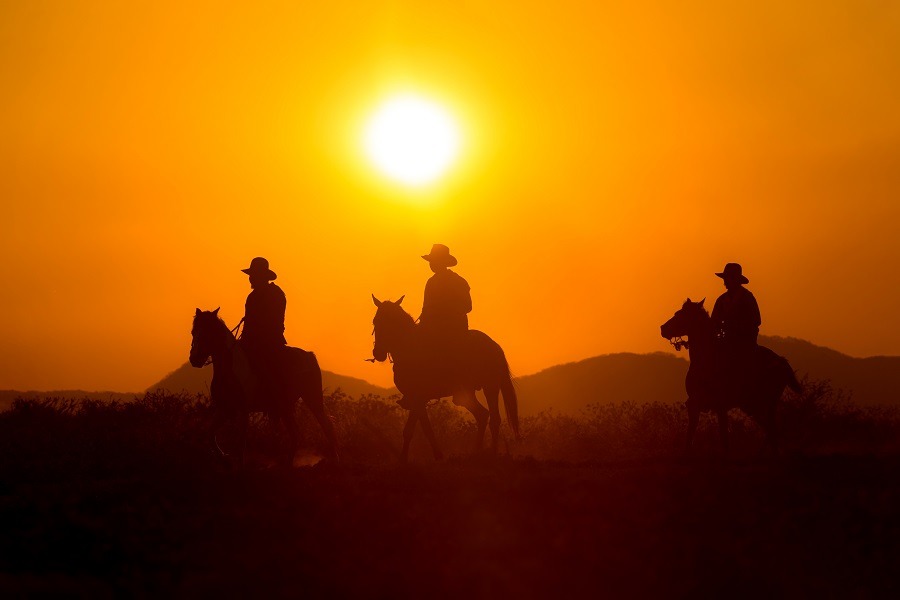
A horse is an entity used for expensive sports like equestrian (horse riding) shows and polo matches to the cheapest mode of transportation in poorer countries.
On the other hand, camels are not exactly slouched in this arena.
Often found in the stretches of deserts such as in the Middle East and Africa, the camel—also known as the “ship of the desert”—is well adapted to survive the harsh desert climate.
Camels can perform well in places where horses may not be a great option.
What Are the Comparative Human Uses of Horses and Camels?
Both camels and horses have been used in the past for similar purposes but in different environments.
In this section, we will be discussing the comparative efficacy of both horse and camel for different activities and services to human beings.
#1 Riding, Racing, and Shows

There are dozens of events involving horse racing worldwide, such as flat racing, harness racing, jump racing, steeplechase, and endurance riding in many regions worldwide.
Many different equestrian sports are played worldwide under the International Federation for Equestrian Sports platform, with slight cultural modifications for different cultures.
These sports include:
- Polo
- Coleo in South America
- Doma Vaquera in Spain
- Tent-pegging in Pakistan and India
There are dozens of international horse shows conducted worldwide each year, such as the London International Horse Show and AQHA World Championship.
Although less popular than horses, camel racing has also been very popular for ages.
Many camel-racing events occur legally or illegally in the Middle East, UAE, Sudan, and Indian subcontinent.
The camel race with the biggest prize money in Australia has a prize purse of 500,000 Australian dollars. The Sheikh Zayed International Camel Endurance Race and Boulia Desert Sand Race are conducted in Queensland, Australia.
Believe it or not, there are camel shows as well. One of the biggest camel shows and fairs is conducted in Rajasthan, India.
#2 Transportation
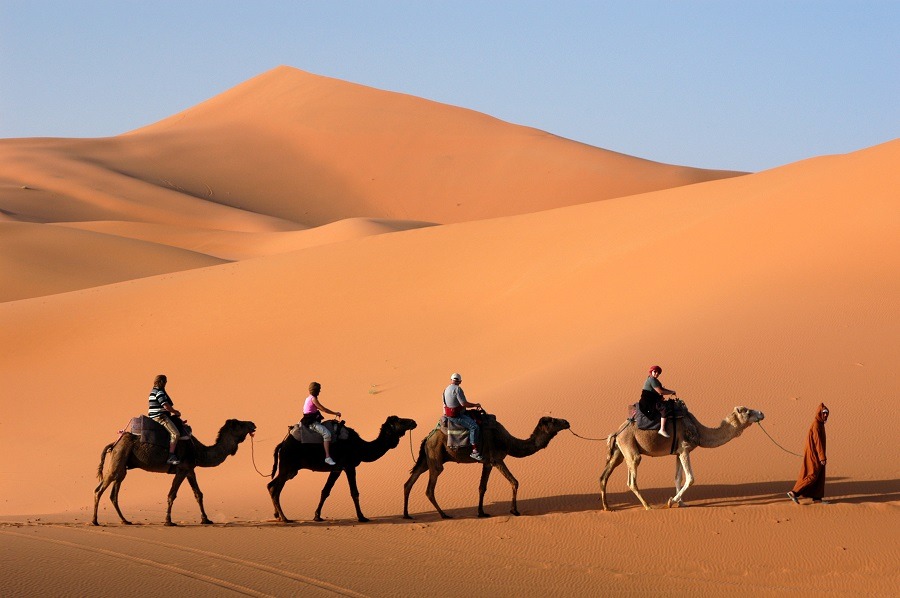
Humans have used horses and camels almost equally and effectively for carriage and transportation. Both species have been used to carry the troops, weapons, goods for trade, and pull carts and trolleys.
A horse can carry 20% of its body weight safely. On average a horse weighs 880 lbs (400 kg). So it can carry 176 lbs (80 kg) safely.
The table below shows the different weights of horses based on their types.
| Horse Type | Horse Weight |
| Draft | 1,500–2,200 lbs (680–998 kg) |
| Light | 800–1,500 lbs (363–680 kg) |
| Ponies | 300–900 lbs (136–408 kg) |
| Miniature | 100–350 lbs (45–159 kg) |
The maximum weight a horse can carry is about 400 lbs (181 kg).
Even today, horses and mules (a cross between a mare and donkey) carry military equipment in hilly areas.
A camel can carry more weight than a horse, up to 600 lbs (272 kg), and is more trusted in deserts and unstable terrains.
It can walk for longer distances without food and water and is more successful in the huge stretches of deserts in the Middle East, Africa, Pakistan, and India.
So, as far as transportation is concerned, the camel is more successful in this area than the horse.
#3 Meat
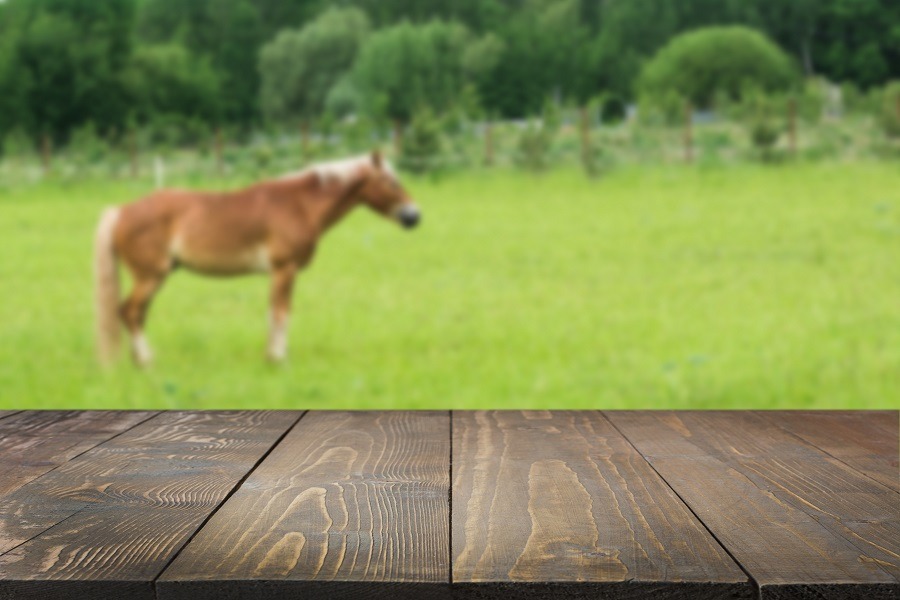
In human history, horse meat has been used extensively for food during drought, wars, and even on cultural and religious events.
Horse meat is as nutritious as beef and has a slightly sweeter taste due to the high glycogen in horse meat.
The color of horse meat is red and contains 21 g of protein, 3 g of fat, and has fewer calories than lean beef—108 kcal per 3.5 oz. (100 g) compared to 120 kcal per 3.5 oz. (100 g).
The horse meat contains more iron and many other minerals and has slightly more protein than beef.
There are some cultural and religious promotions as well as hurdles in regards to consuming horse meat.
In countries like Pakistan, India, and Afghanistan, horse meat is not consumed except illegally.
However, China is the largest producer of horse meat, followed by central Asia and other countries.
Horse meat can be difficult to chew, especially in the case of meat from older horses.
Over 1 million horses are slaughtered each year for meat, and most of them include:
- Ex-racehorses
- Sick or injured horses
- Older horses.
Camel meat has been extensively used throughout history.
With a good moisture content of 76–78%, a protein content of 20 g and fat content of 6 g per 3.5 oz. (100 g), and a high concentration of minerals and vitamins, camel meat is very popular in many communities around the world.
Camel meat contains around 136 kcal per 3.5 oz. (100 g).
The table below shows the comparison of the nutritional contents of different meat products per 3.5 oz. (100 g) serving.
| Type of Meat | Calories | Proteins | Fats |
| Horse Meat | 108 kcal | 20.6 g | 2.6 g |
| Lean Beef | 120 kcal | 20.3 g | 4.3 g |
| Camel Meat | 136 kcal | 19.5 g | 6.4 g |
Some cultures in Africa mix camel blood with milk to create a drink that is a good source of minerals and vitamin D.
Kenya is the largest camel meat producer globally, followed by Somalia and Saudi Arabia.
Approximately 3.3 million camels and camelids are slaughtered each year for their meat.
#4 Milk
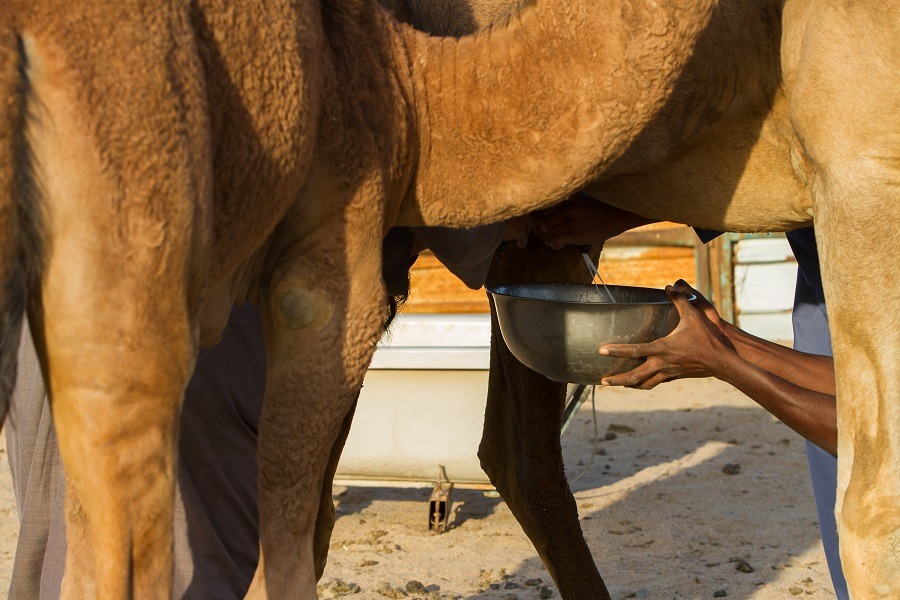
In terms of milk, camel milk is more popular than horse milk.
The composition of camel’s milk resembles humans concerning total solid contents. The comparison between horse, camel, and human breast milk is listed in the table.
| Nutrients/Minerals | Mare (Female Horse) Milk | Camel Milk | Human Breast Milk |
| Fat | 1.20% | 3.50% | 3.64–7.10% |
| Protein | 2.14% | 3.10% | 1.40% |
| Lactose | 6.30% | 4.40% | 6.70–7.20% |
| Casein (g/kg) | 10 g | – | 3.7 g |
| Calcium (mg/100 mL) | 102 mg | 114 mg | 30 mg |
| Magnesium (mg/100 mL) | 9 mg | 10.5 mg | 3 mg |
Horse milk has many health benefits due to its low fat percentage. As a result, it is highly valued for addressing skin-related problems and is used in many beauty products. However, the mare’s milk yield is quite low, 2.9–4 gal (11–15 L) per day.
On the other hand, camel milk is of great value, especially in the dry and harsh conditions of the desert.
A camel can produce up to 9 gal (30 L) of milk per day and is efficient in the deserts where food and water are extremely scarce. Moreover, camel milk has more minerals and vitamins in its milk.
As a bonus, camel milk is good for people with lactose intolerance (inability to digest lactose in the milk) due to its low lactose percentage.
Both horse and camel milk do not convert well into cheese; yet, some cheese products are available. So, in terms of meat and milk, the camel fairs far better than a horse.
#5 Beauty Products and Soaps
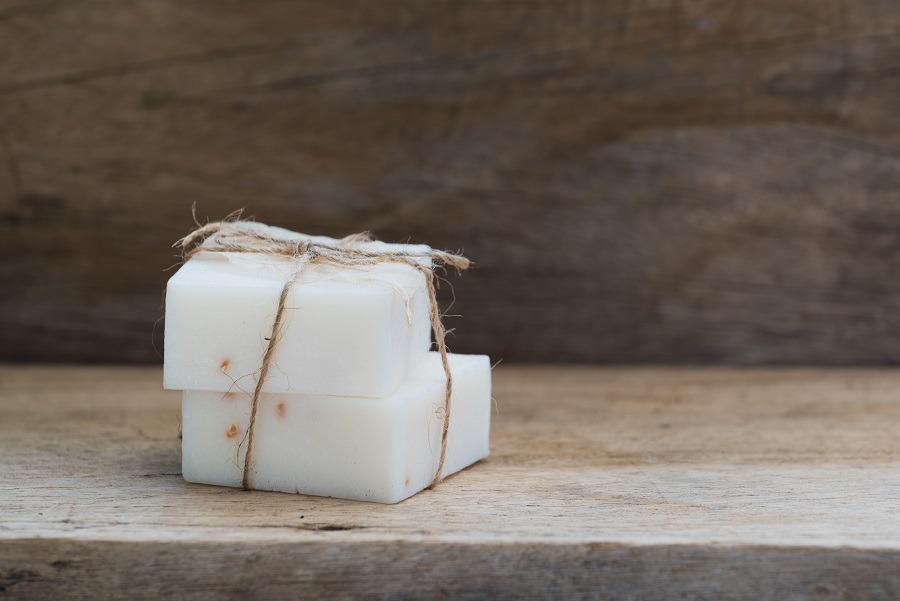
Both horse and camel milk are used in formulations in beauty products such as:
- Soap
- Face cream
- Bath additives
Horse milk is more prevalent in this regard because camel milk is mostly consumed for drinking.
After all, it is an important source of milk in remote areas of the desert where it is difficult to store and transport other types of raw milk.
#6 Hair
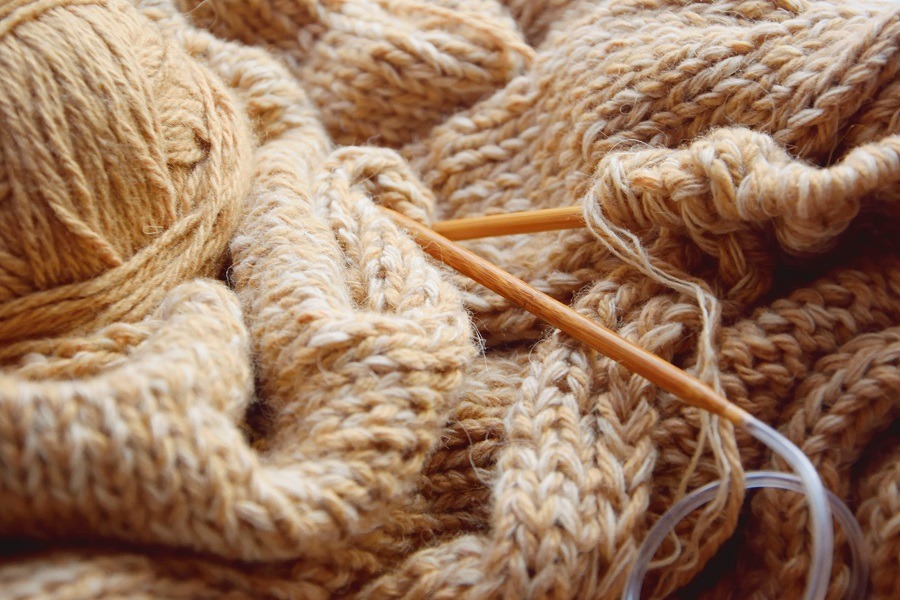
Horses have fine, silky, long hair over the head, mane, and tail. These long hairs are used in various ways to make useful products such as paintbrushes, wigs, bracelets, strings of musical instruments, and a good extender of silk fabric by mixing horsehair with silk threads.
However, if you need blankets, rugs, tents, and warm clothes of the highest quality, camel hair is the best choice along with wool and mohair.
Camel hair, when blended with wool, produces high-quality, warm clothes. The hair of the Bactrian camel is of better quality and quantity in this regard.
#7 Leather

Horse leather is smooth and makes quality shoes, furniture upholstery, and other leather products. It also has good patterns on it, which enhances its aesthetic appeal.
Camel leather has 10 times more fibers per square cm (roughly a half-inch) than cowhide and is hard, strong, and tough. Although it is not very smooth, it has no match in durability.
The bottom line is that both camels and horses have been created by nature for specific purposes, and both are important to humans.
Although much of their former labor has been superseded by machineries such as trucks and cars, we cannot deny the importance of both species, especially when it comes to milk, meat, and other raw products.
Who Is the Horse?
With its excellent anatomy adapted for running, a great ability to differentiate between different tastes, a unique capability to sleep while standing, and good cognitive abilities and curiosity, the horse was domesticated by humans around 6,000 years ago.
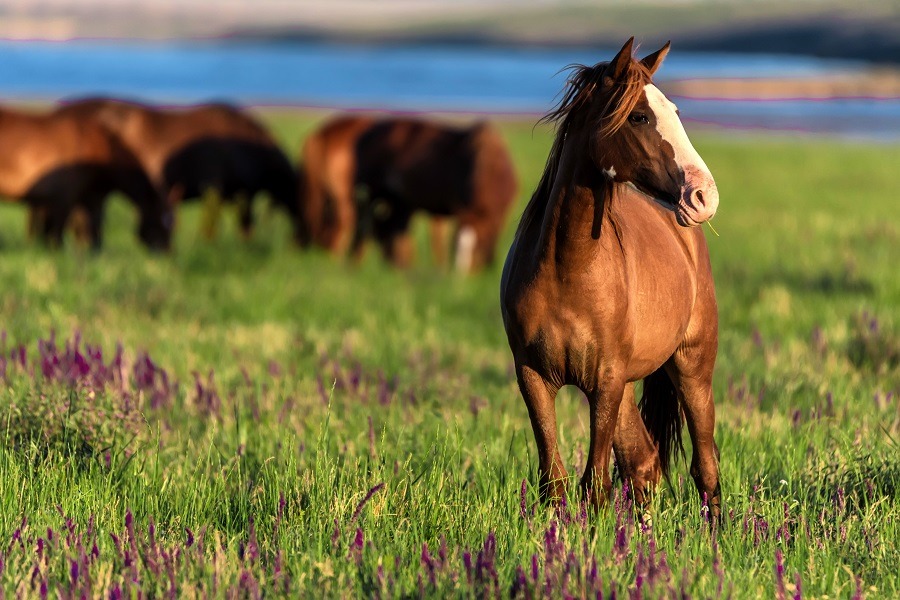
Horses belong to the Equidae family, one of the three surviving families of the order Perissodactyla, along with rhinoceros and tapirs.
Habitat of Horses
After being domesticated, horses can live almost anywhere with the assistance of humans who provide them food, shelter, and water. But in the wild, horses prefer open plains and live near freshwater.
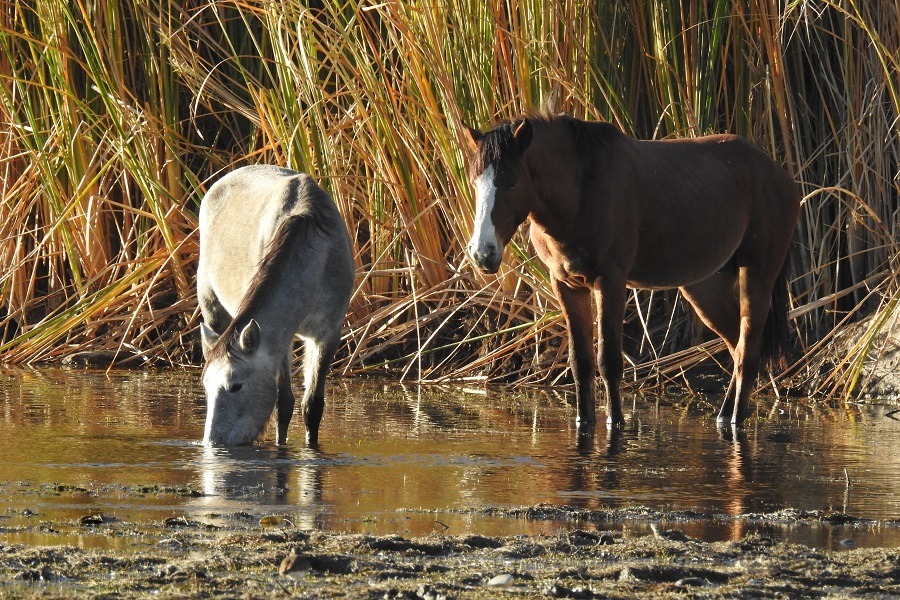
Horses can spend 15–17 hours a day grazing in open pastures.
Appearance of Horses
The height of horses is determined by the wither height, which is measured from the ground to the horse’s wither or shoulder.
Although the height could be measured using a standard unit, it is instead described in terms of “hands” (1 hand = 4 in or 10.16 cm).
Horses, on average, range in height from 14–18 hands, with a few exceeding or going below that range depending on the breed. Light horses have a height range of 12–17 hands, while draft horses have an average height range of 14–17 hands.
A Belgian Gelding (draft horse) can grow up to 20 hands in height while a Shetland Pony can be as short as 7 hands in height.
Ponies stand at 13.2 hands on average.
However, the new classification system doesn’t give much importance to size but rather focuses on breed and pedigree.
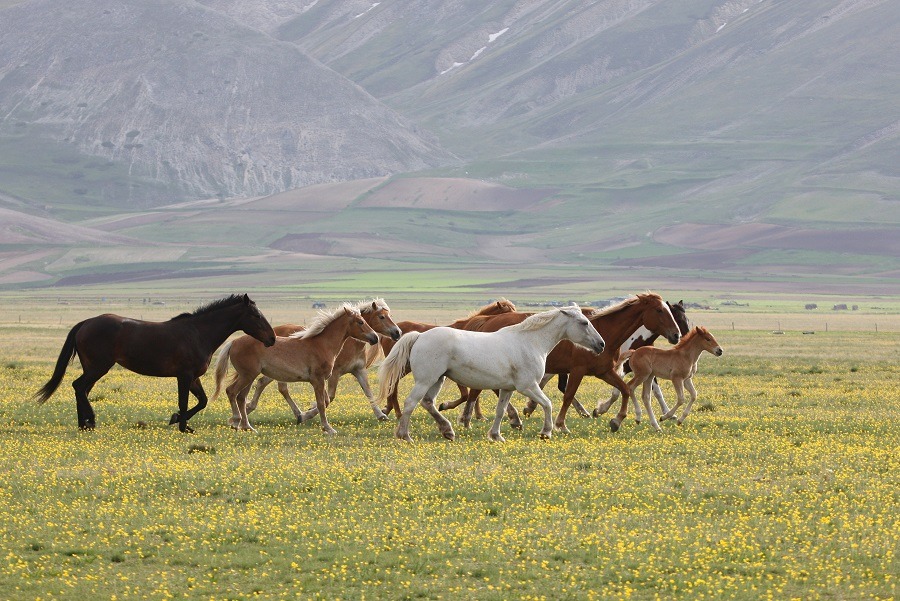
Horses coats appear in a large variety of colors, such as dark red, bay, black, yellow, chestnut, brown, silver, gray, white, dun, buckskin, palomino, pinto, and many more. There are two primary colors in dark horses; red or black.
Other colors are the variation caused by the presence or absence of different genes. White horses have pink skin and white coats that appear due to genetic variations. Gray color can appear in dark horses due to progressive de-pigmentation of hair due to old age.
Horses have a thick growth of hair called a mane on the top of the neck and head. They have 36–44 teeth. Canine teeth are absent in mares. The average life span in horses is 25–30 years.
Diet of Horses
Horses are herbivores meaning they feed on plant materials such as grasses, shrubs, and small plants in the wild. Domesticated horses eat various food from grasses, hay, and fruits, to grains, concentrate (mix of grains, cereals, and minerals), and, of course, salt.
One of the most important things about horses is that they have a long and sensitive digestive tract, including 70 ft (21 m) of the small intestine and 22 ft (6.7 m) of the large intestine.
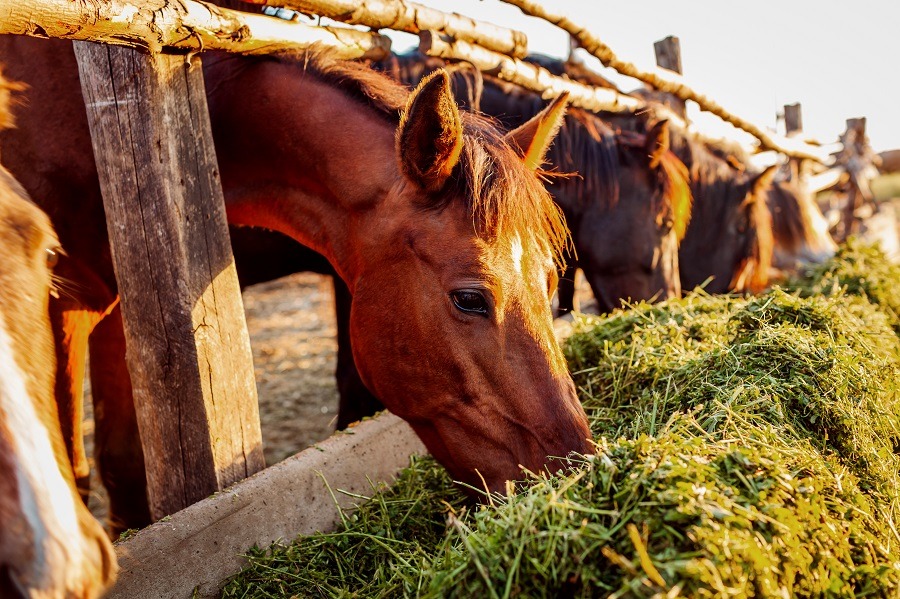
Horses are not ruminants like cattle but have a simple stomach like us. Their small stomach cannot store a large quantity of feed, and therefore they need to eat frequently in small volumes.
Moreover, horses have to eat a large quantity of fiber to move the food through their long alimentary canal.
So, excessive focus on concentrate feeding can lead to constipation and colic (severe abdominal pain).
A horse needs a daily dry matter (weight of forage minus its water content) intake of approximately 1% to 3% of its body weight; 50% of which should consist of roughage such as grass or hay.
An adult horse drinks 5–10 gal (19–38 L) of fresh water in a day.
Breeding of Horses
Horses’ breeding happens seasonally during the long summer days because a mare (female horse) does not have an estrous cycle (breeding cycle) during the short days of winter.
The estrous cycle in mares is about 21 (19–22) days. During this time, it becomes receptive to a stallion for about 5–7 days of the cycle in a period known as estrus.
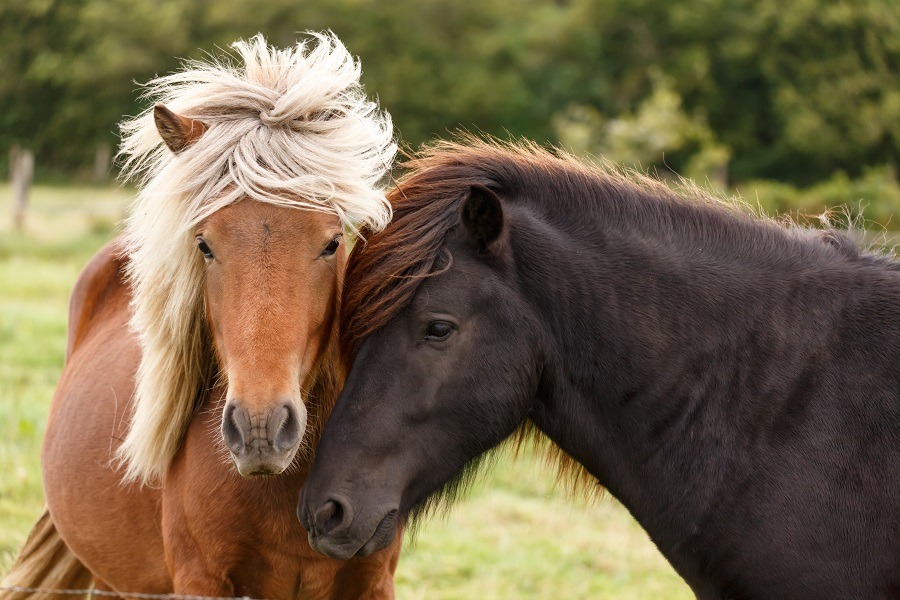
If a foal is conceived, the gestation period is about 340 (320–370) days. Therefore, breeding during the spring and summer is an adaptation to avoid foaling—that is, giving birth to a baby horse—during the winter, when the foal’s chances of survival are more precarious.
However, by manipulating the light in breeding farms, the estrous cycle can be induced in mares artificially, even in winter. So it is still possible to have mares foal during winter.
This has some advantages because of the age determination used in horse racing, with the key date being on January 1, or in a few instances, August 1.
For racing, this is the beginning of the year to determine the horse’s age regardless of the actual birth date.
Behavior of Horses
In terms of instinctive behavior, the domesticated horses are no different from their wild ancestors.
They are prey animals in the wild and most prey animals flee (and are adapted to flee) at the sight of a predator.
Horses also live in herds with specific hierarchies. They perform many cognitive functions daily, such as food selection and identification of herd members. In addition, horses tend to be curious and will explore things.
One thing of paramount importance for any horse is its temperament. This will depend upon how its mother treated it when it was a foal.
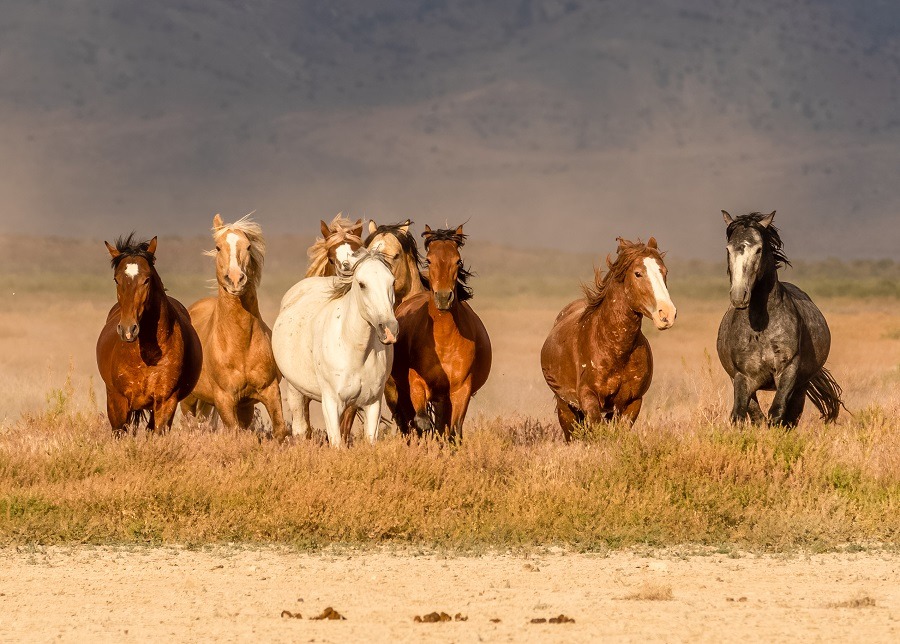
During the early hours of its life, a mare will keep other members of the herd away from the foal because, during this period, the behavior and activity of the mother are imprinted into the foal’s mind.
Horses have three main types of temperament:
- Hot-blooded (racing horses)
- Cold-blooded (draft horses)
- Warm-blooded (these are riding horses produced by crossbreeding the other two categories)
Who Is the Camel?
With the ability to withstand dehydration up to 30% of their body weight, to tolerate a wide temperature range from 93°F–120°F (34°C to 49°C), and to drink 40 gal (151 L) of water in one go, the dromedary camel (Camelus dromedarius) is one of the most resilient and hardened animals adapted to the desert environment.
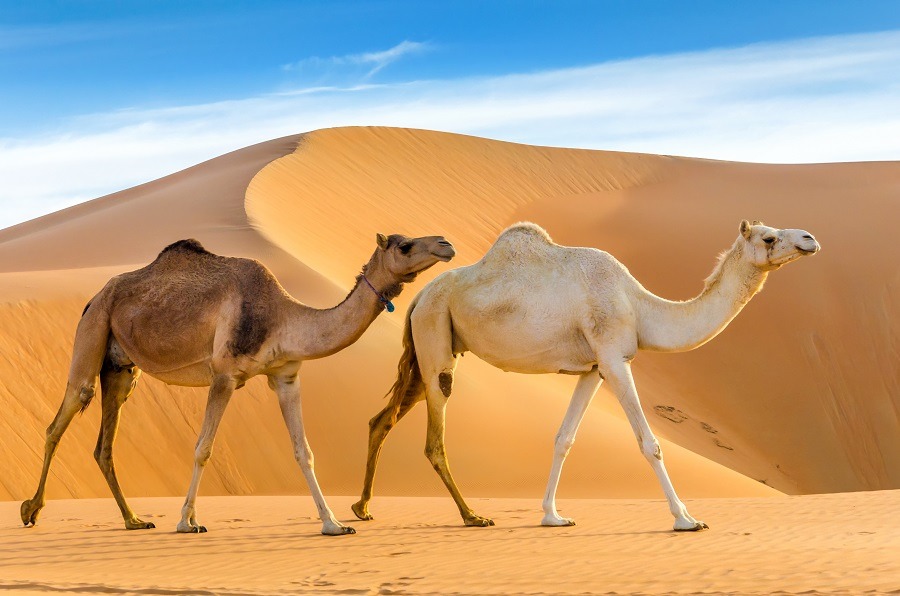
The dromedary camel constitutes about 94% of the genus Camelus, also known as camelids. The other 6% consists of Bactrian camel (Camelus bactrianus) and new world camels such as the Llama, Alpaca, and Guanaco.
For the sake of convenience, we will talk about dromedary camels only in this article. These are the camels with a single hump. A hump is a pile of fatty tissue on the back of a camel.
Habitat of Camels
Camels live in and are well adapted to life in a desert environment. They have large feet for stable footing on the sand. Their large eyelashes protect them against blowing sand.
They can shut their nostrils in case of sand storms and can withstand dehydration up to 30% of their body weight. They can survive without food and water for days.
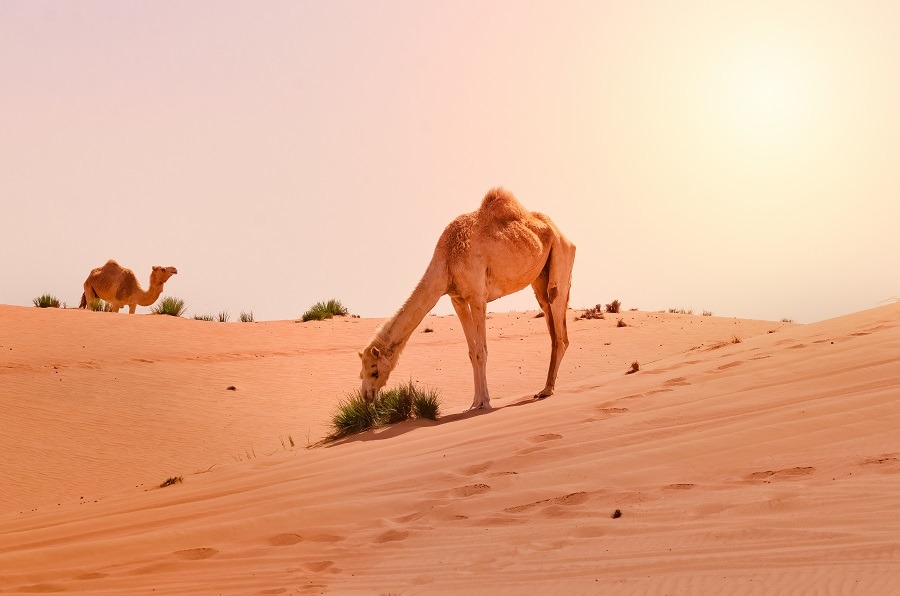
But, when they can eat and drink, they can consume a large quantity of food and water (up to 53 gal or 200 L) when available. They have thick pads on their chest and knees so that they can sit on hot sand.
Appearance of Camels
A dromedary camel is the tallest of all camelids, with a shoulder height of approximately 5.6–6.6 ft (1.7–2 m). This camel is characterized by a single hump that is higher than its long curved neck.
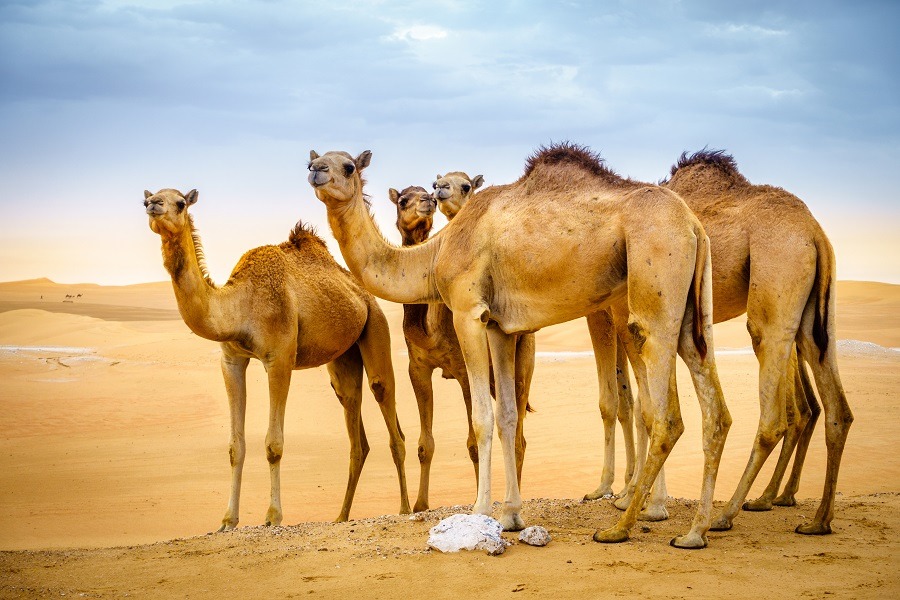
Their fur coat is light to dark brown, which turns darker during the hotter months of the year. They have wide feet for a firm grip on slippery sand and long legs to stand far away from the hot sand of the desert. Camels have 34 permanent teeth.
The other types of camelids are smaller in size, and only the Bactrian camel has a double hump.
Diet of Camels
A camel’s digestive system is different from other ruminants. Having a three-chambered stomach, camels are considered as pseudo-ruminants.
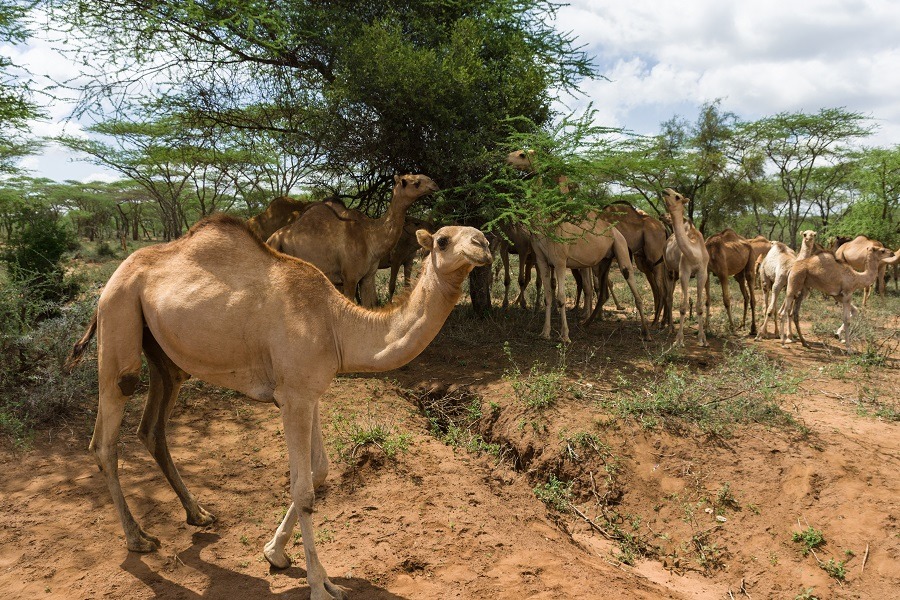
The stomach of camels is not divided into 4 compartments, like a cow, but has 3 parts that are not clearly separated from each other.
Still, the camel is adapted to eat various foods such as grasses, foliage, thorny bushes, trees, and vines. They have hard structures in their mouth that help them to chew thorns and hard bushes.
Camel Breeding
Camels are atypical seasonal breeders and reach sexual maturity late. Male camels expose their soft palate and develop a red swelling at the side of their mouth called dulla. They also exhibit aggression to prove dominance over other males.
Camels are the only four-legged mammals that mate in a sitting position. The male forces the female to sit and then restrains her using his front leg. The mating occurs in a sitting position for 7 to 35 minutes.
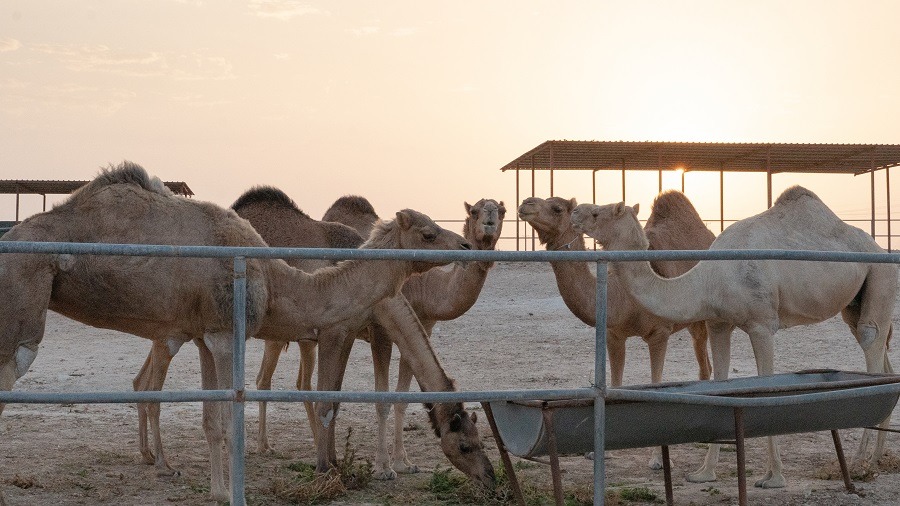
They sometimes require assistance. Dromedaries are induced ovulators, which means that ovulation, when an egg is released from the follicle of the ovary, is caused by the male penis during copulation. The gestation period in camels is about 15 months.
Behavior of Camels
Camels also live in groups called herds. These groups are dominated by males. Although they were domesticated about 5,000 years ago and have lived peacefully in human populations, camels are extremely revengeful and never forget an incident that brought harm to them.
They have excellent memories and can remember the paths in the desert even after sand storms.
What Are the Differences Between Horses and Camels?
Although we have already discussed some comparisons between these two animals above, let’s explore some additional differences in more detail below.
#1 Speed
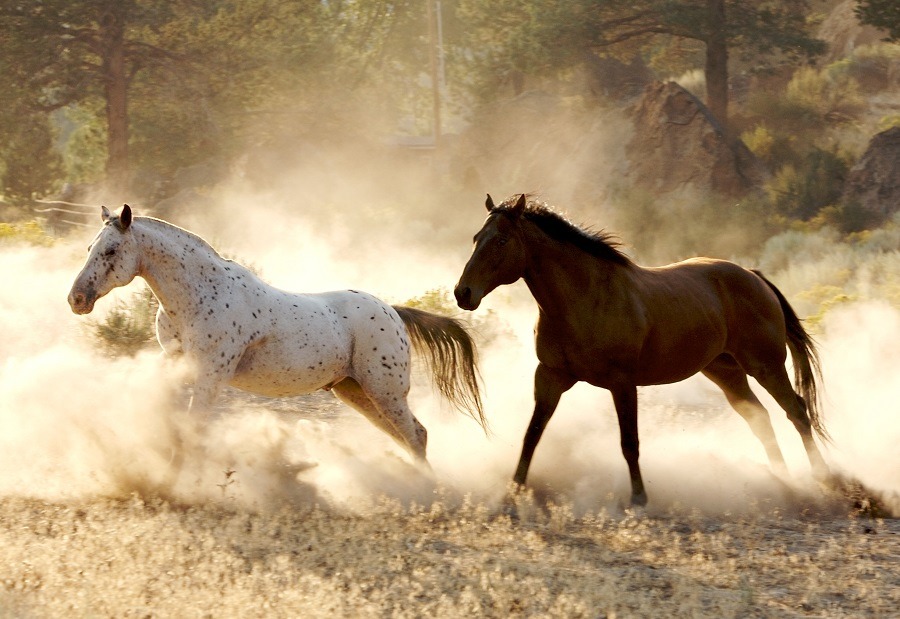
Horses sprint faster than camels, with a maximum speed of 55 mph (88 km/h) compared to 44.4 mph (65 km/h) of camels. The average speed of horses is 25–30 mph (40–48 km/h). For a camel, its average speed is 12–12.4 mph (19–20 km/h).
The lower speed of camels is due to their heavy bodies and fat tissue deposits in their hump.
In addition, a camel eats and drinks in bulk when available, which further reduces the speed compared to a horse, which can only ingest small quantities of food and water because of its smaller stomach.
#2 Digestion
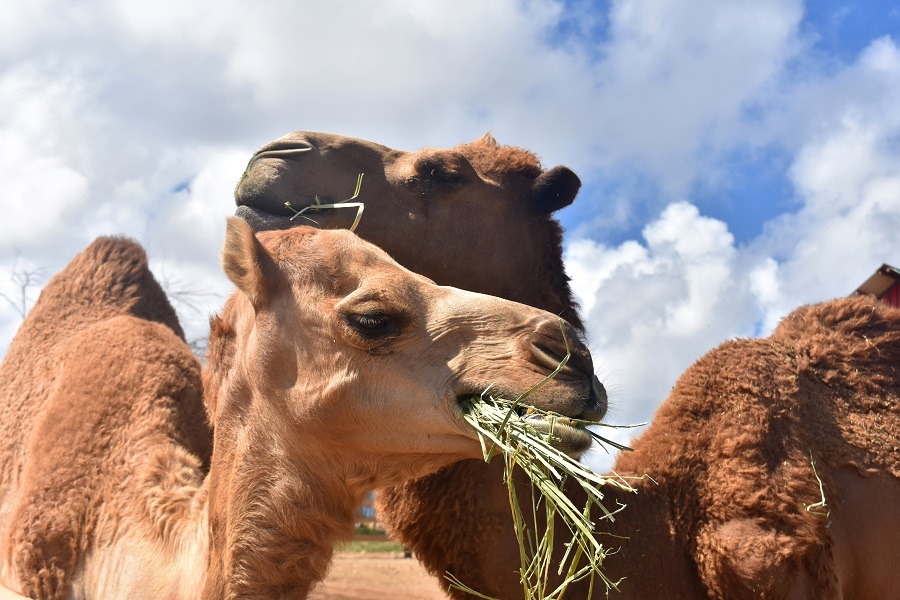
Horses are simple stomach animals with fermentation abilities in their large intestine, while camels are pseudo-ruminants and ferment their food in their ruminant-like stomach.
The gases produced during the fermentation process are released from the anus of a horse. On the other hand, camels release gases, or eructate (a.k.a. belch), through their mouth. This is why horses fart, but camels don’t.
#3 Tolerance to the Harsh Desert Climate
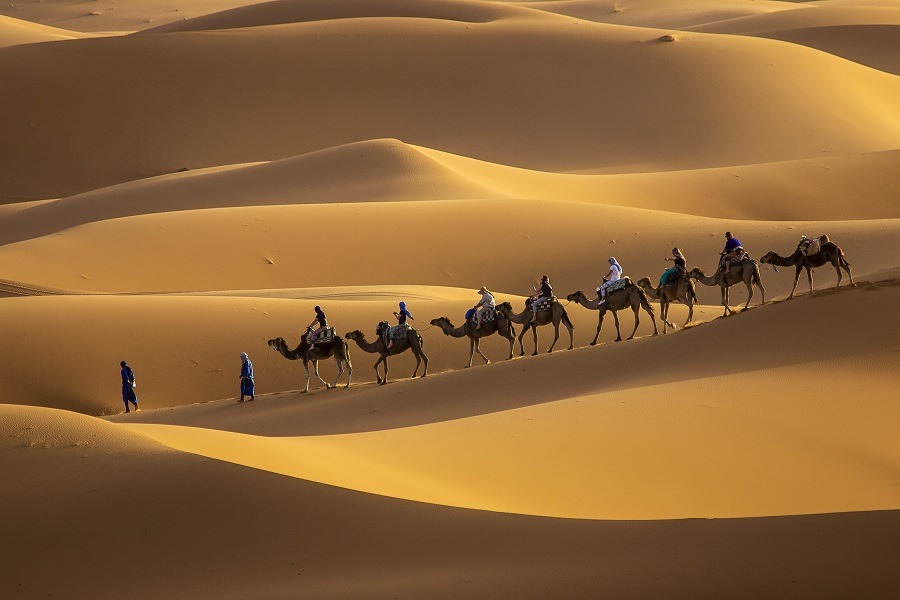
A man can sweat while just thinking about the heat, sand, and scarcity of water in a desert where a camel not only survives but is well adapted to that climate. For example, a camel can tolerate a temperature as high as 122°F (50°C) easily, whereas a horse would die quickly.
This ability of camels to withstand high temperatures and dehydration is due to many reasons.
- Its thick coat and skin provide buffering against harsh conditions.
- Its kidneys are highly adapted to save water because it has a larger medullary (inner) region.
- A camel’s nostrils can absorb exhaled water vapors.
- It’s long legs and thick pads at key points on the body provide a buffer against the hot sand.
- They have a special network of blood vessels called rete mirabile to protect their brains during periods of extremely high temperatures.
- They can store large quantities of water and food in their bodies.
Horses just don’t have such special mechanisms for thermoregulation.
#4 Spitting
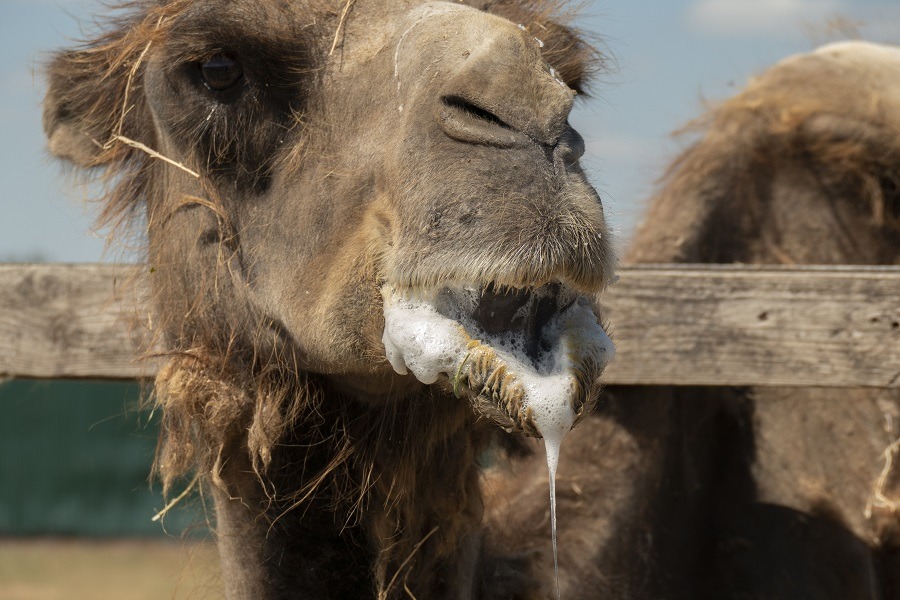
Seeing a camel spit is fascinating. They bring their stomach contents and saliva up and spit it out as a sign of annoyance and avoid being approached by anyone or anything.
Horses don’t spit.
#5 Eyelashes and the Third Eyelid
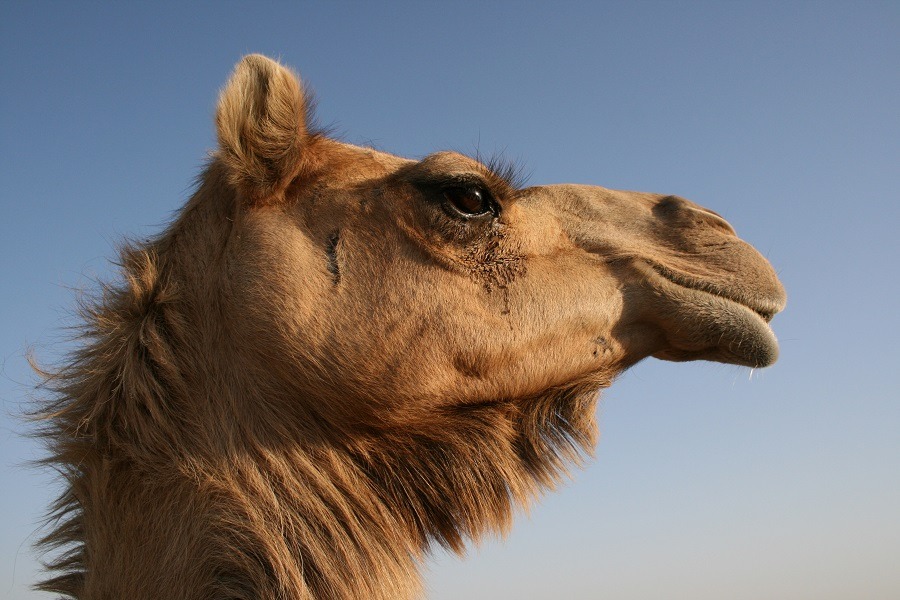
Being native to the desert, camels have special mechanisms to avoid sand, such as extremely long eyelashes and a third eyelid that they can pull down to protect their eyes during sand storms.
Horses don’t have these.
#6 Sleeping Habit
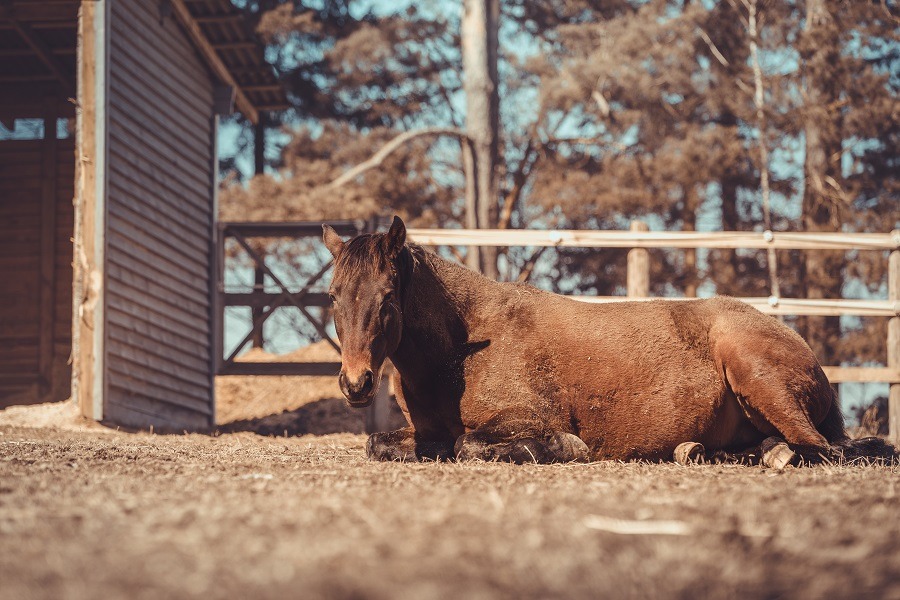
Both horses and camels sleep, but camels can sleep while standing like horses and while sitting.
Horses cannot sit and only sleep while standing or lying down.
#7 Life Span
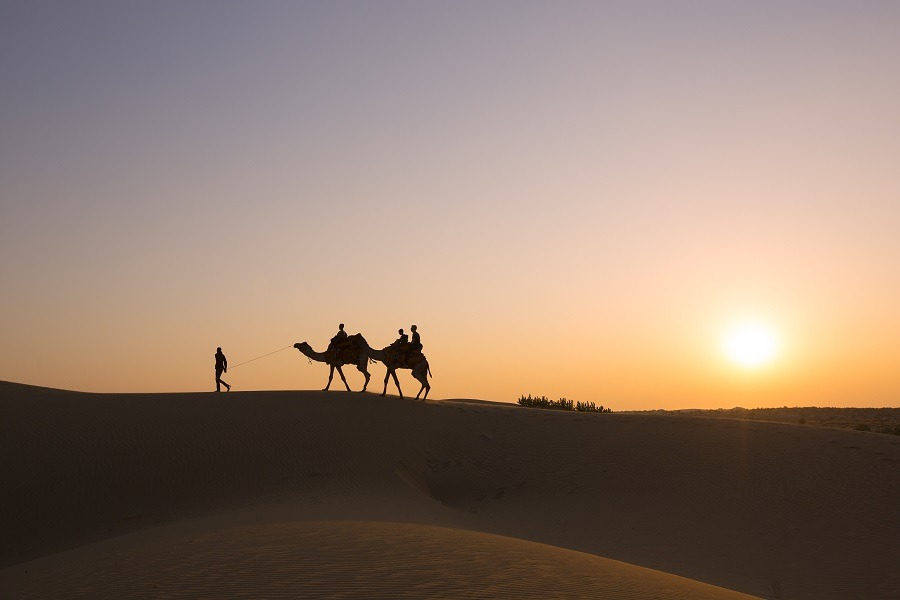
Camels live longer than horses. They have an average life span of 40–50 years, while horses live for 25–30 years. In addition, camels reach sexual maturity later than horses and have longer gestation periods.
#8 Structure of the Foot
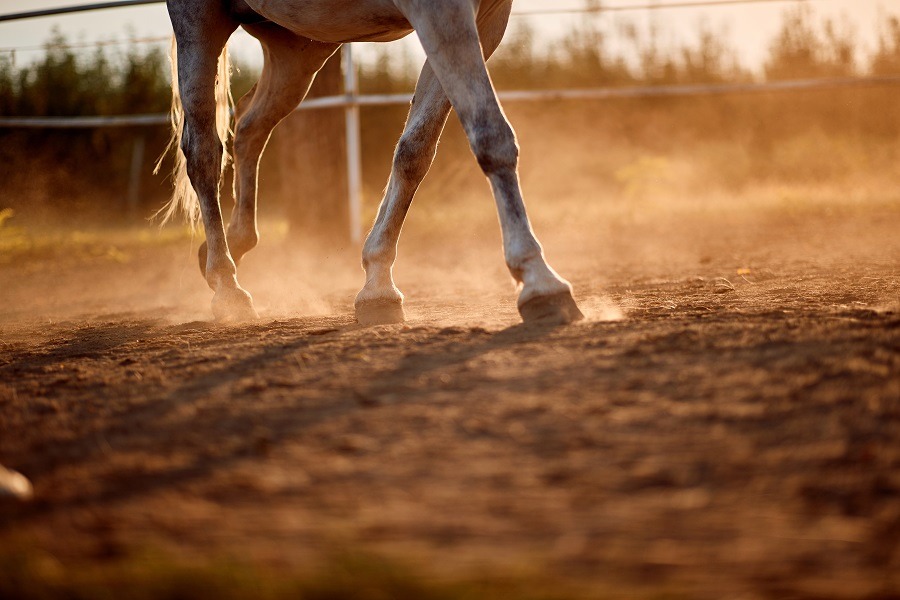
A camel’s foot is different from that of the horse. A camel is a digitigrade, which means it walks on its toes, and its heel never touches the ground. It is an even-toed animal that walks on two digits like dogs and cats.
On the other hand, the horse is truly ungulate, meaning the distal bones are organized in the form of a hoof. They are also odd-toed animals.
#9 Number and Structure of Mammary Glands and Teats
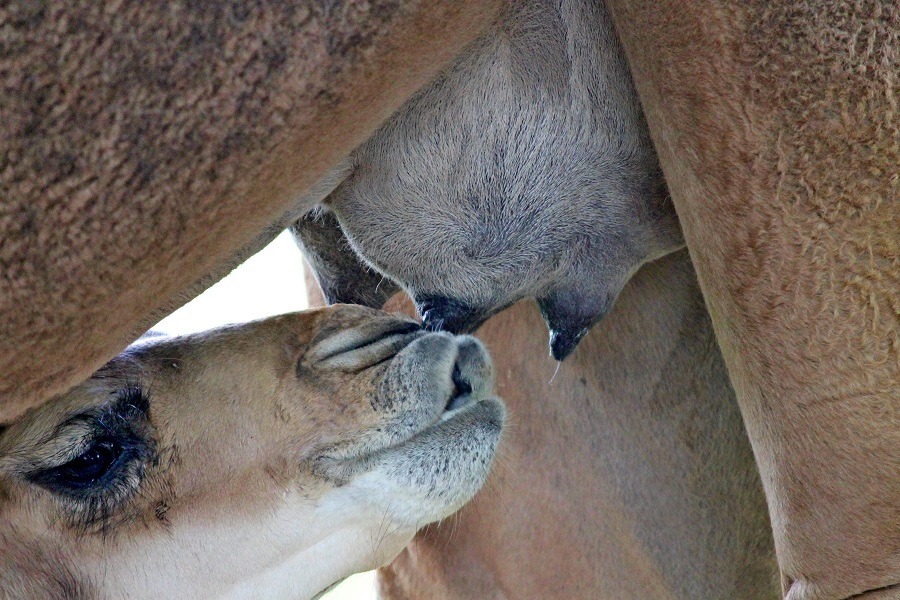
Horses have two mammary glands with two teats, one attached to each gland.
A female camel (camel cow) has four teats attached to four quarters of its udder.
#10 Direction of Penis and Urination
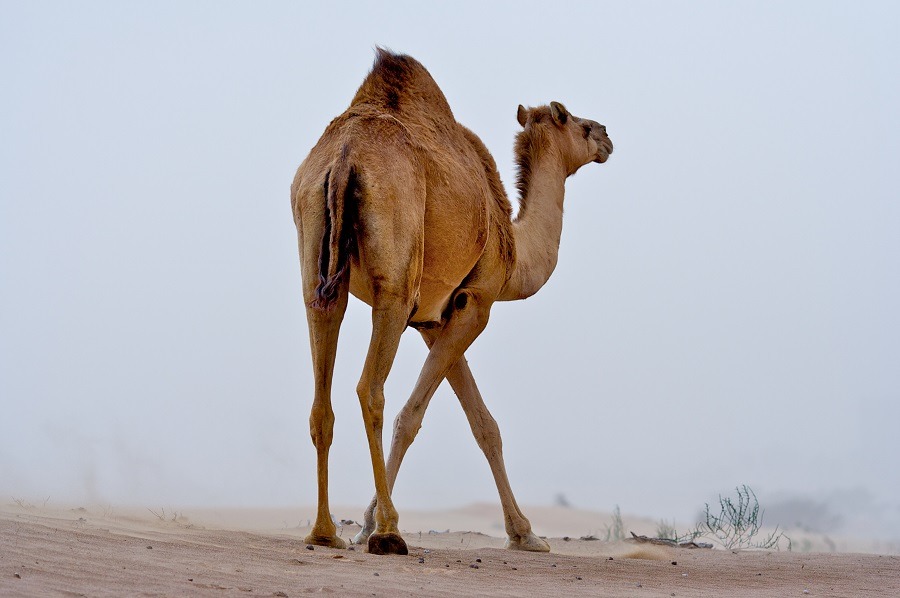
The penis of the horse is directed cranially (towards the head).
A camel’s penis in a non-erected state is directed caudally (towards the tail) because of the long, muscular, cone-shaped prepuce (covering of penis), which means the camel urinates caudally.
